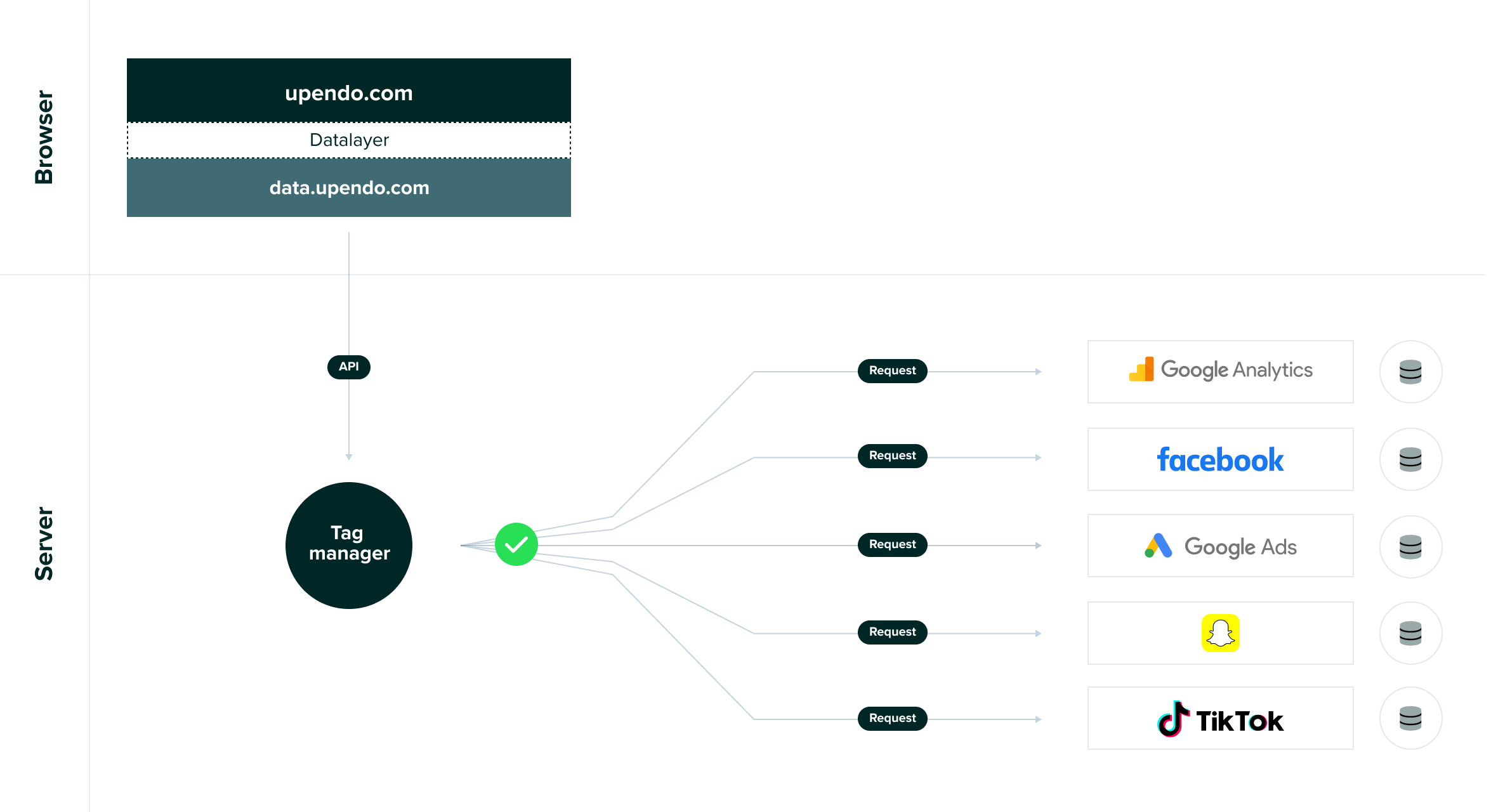Google Tag Manager (GTM) is a powerful tag management tool that allows you to quickly and easily place and update tags on your website or mobile app. By implementing tagging in Google Tag Manager, you can collect and manage data without needing to code each tag individually. This reduces the load on your website and improves loading speed while providing more control and security in managing your data. Server-side tagging through Google Tag Manager allows you to protect sensitive user information while gathering accurate and relevant data for analysis and optimization.
With server-side tagging, as used in Google Tag Manager, an extra layer is added to the process. This is known as the server-side container in Google Tag Manager. Instead of direct browser-to-server communication, the data is first sent to a subdomain that you manage. This subdomain acts as an intermediary where data is collected, filtered, and then forwarded to external parties. In addition to tracking more data, you also gain greater control over data quality, and your website becomes much faster.








